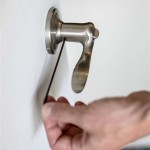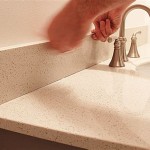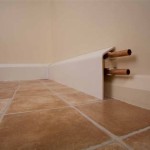How to Use Silicone Bathroom Sealant
Silicone bathroom sealant plays a vital role in preventing water damage by creating a waterproof barrier around baths, showers, sinks, and toilets. Proper application ensures a long-lasting, effective seal that resists mold and mildew growth. This guide provides a comprehensive overview of how to apply silicone bathroom sealant correctly.
Preparation is Key
Before beginning the sealant application, proper preparation is crucial for a successful outcome. The surface must be clean, dry, and free of any existing sealant residue. This ensures optimal adhesion of the new silicone.
- Clean the Surface: Thoroughly clean the area to be sealed with a suitable bathroom cleaner to remove soap scum, grime, and mildew. A mild abrasive cleaner may be necessary for stubborn stains.
- Remove Old Sealant: If replacing old sealant, carefully remove it using a sealant removal tool or a sharp utility knife. Scrape away any remaining residue and ensure the surface is smooth.
- Dry the Surface: Ensure the surface is completely dry before applying new sealant. Any remaining moisture can compromise the adhesion and lead to premature sealant failure.
- Mask Adjacent Surfaces: Apply masking tape along the edges of the area to be sealed. This creates clean lines and prevents the sealant from spreading onto unwanted surfaces.
Choosing the Right Sealant
Selecting the appropriate type of silicone sealant is important for long-term effectiveness. Consider factors such as mildew resistance, adhesion properties, and color.
- Mildew Resistance: Opt for a sealant specifically formulated for bathrooms with added mildew inhibitors. This helps prevent unsightly mold growth in the damp environment.
- Adhesion Properties: Ensure the sealant is compatible with the materials being sealed, such as ceramic, acrylic, or glass. Check the manufacturer’s specifications for compatibility information.
- Color Selection: Choose a sealant color that complements the bathroom fixtures and décor. Clear or white are common choices.
Applying the Sealant
Applying the sealant correctly requires a steady hand and consistent pressure. Follow these steps for optimal results.
- Prepare the Cartridge: Cut the nozzle of the sealant cartridge at a 45-degree angle, using a sharp utility knife. The size of the opening should match the width of the gap being sealed.
- Load the Cartridge: Insert the cartridge into a caulking gun and apply consistent pressure to the trigger to dispense the sealant.
- Apply a Continuous Bead: Starting at one end of the gap, apply a continuous bead of sealant, maintaining even pressure on the caulking gun trigger. Avoid stopping and starting as this can create weak points in the seal.
Smoothing and Finishing
Smoothing the sealant bead ensures a professional, watertight finish. This step also removes excess sealant and creates a concave profile that helps shed water.
- Smooth the Bead: Use a wetted finger or a sealant smoothing tool to smooth the bead of sealant, creating a concave profile. This shape allows water to run off easily and prevents pooling.
- Remove Excess Sealant: Wipe away any excess sealant with a damp cloth or paper towel. Clean up any spills or smears immediately.
- Remove Masking Tape: Carefully remove the masking tape while the sealant is still wet. This creates clean, straight lines.
- Allow to Cure: Allow the sealant to cure completely according to the manufacturer’s instructions before using the shower or bath. This typically takes 24 to 48 hours.
Troubleshooting Common Issues
Addressing common issues during the application process can prevent future problems and ensure a long-lasting seal.
- Uneven Bead: If the bead of sealant is uneven, practice applying consistent pressure on the caulking gun trigger. Start with smaller sections until comfortable with the technique.
- Air Bubbles: Air bubbles can weaken the seal. Puncture any visible bubbles with a pin or toothpick immediately after application.
- Poor Adhesion: If the sealant does not adhere properly, ensure the surface was thoroughly cleaned and dried before application. Incompatible surfaces may also contribute to poor adhesion.
Maintaining the Seal
Regular maintenance helps prolong the life of the silicone sealant and prevents mold and mildew growth.
- Regular Cleaning: Clean the sealed areas regularly with a mild bathroom cleaner to remove soap scum and grime. Avoid using harsh chemicals or abrasive cleaners that can damage the sealant.
- Inspect for Damage: Periodically inspect the sealant for any signs of damage, such as cracks or gaps. Repair or replace damaged sealant promptly to prevent water damage.
- Ventilation: Ensure adequate ventilation in the bathroom to reduce moisture buildup, which can contribute to mold and mildew growth.

How To Seal A Bath Properly
Top Tip On How To Apply Silicone Sealant With Step By Pictures
How To Remove And Replace Silicone Sealant
Grout Vs Silicone What S Best When Renovating Your Bathroom
How To Silicone A Bath Or Shower Tray The Easiest Way Tile Mountain
How To Silicone A Bath Or Shower Tray The Easiest Way Tile Mountain
Advice On How To Replace Bath Or Shower Silicone Sealant
How To Silicone A Bath Or Shower Tray The Easiest Way Tile Mountain

How To Apply Sealants In Wet Areas
How To Re Silicone A Mouldy Shower







